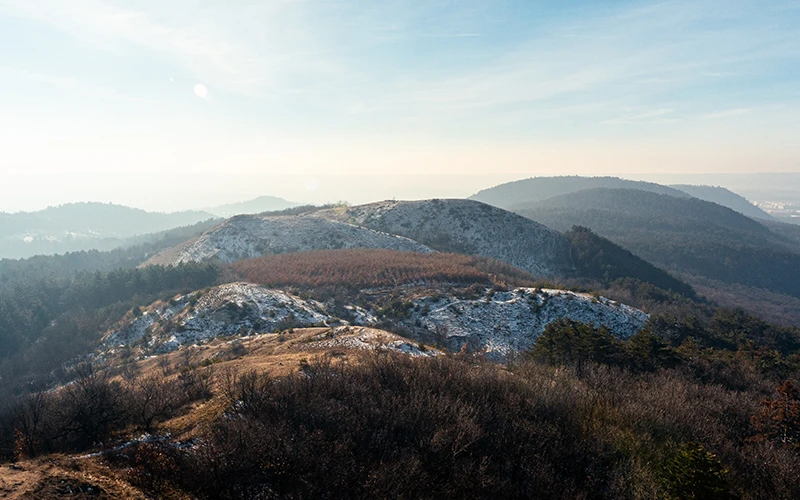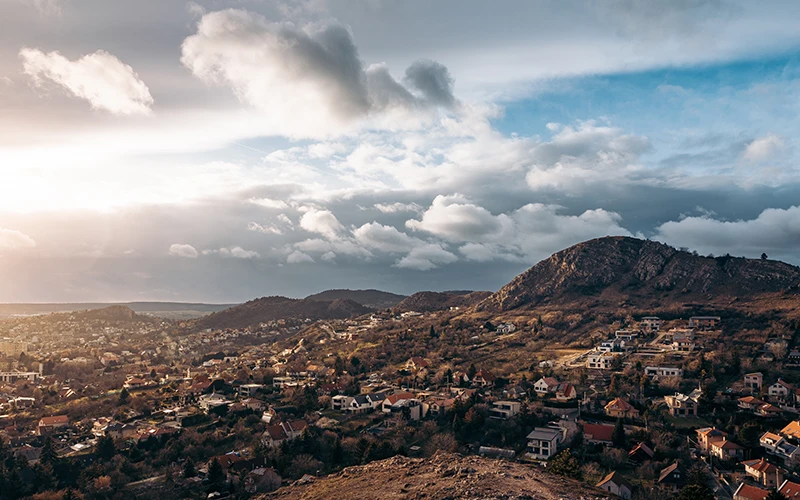How to Prepare for Your First Landscape Photography Hike

Man's Best Friends
2024.04.22. Farkas-hegy, Budaörs Sony A7 III & Tamron 20-40mm f/2.8The Knowledge
Before we hit the trails, it's really important to get to know the terrain and lighting conditions of our shooting location. Take some time to do a little research online. I use Google Maps to study potential photography spots and don't forget to check the weather forecast. Understanding the landscape will help you anticipate the best angles and compositions for capturing stunning images.

The Gear
When it comes to photography gear, having the right tools can make all the difference in your landscape photography. Here are some essentials to consider bringing along:
- Lenses: For landscape photography, wide-angle lenses are often preferred as they allow you to capture more of the scene. Consider bringing a lens with a focal length between 14mm and 35mm to encompass expansive landscapes. At the same time, if you have a telephoto lens don't forget to bring itwith you to capture distant details or to compress elements in your composition. Kit zooms are perfect starting choices.
- Filters: Lens filters can enhance your landscape photographs by controlling light and glare. A Cir-PL filter is useful for reducing reflections and boosting colour saturation, especially when photographing bodies of water or skies. ND filters are also useful for long exposure effects, such as smooth waterfalls or streaky clouds. If you want to go further with your images, I can't stop using Mist or Diffusion filters recently; they'll add blooming to your highlights, creating a stunning dreamy look to your landscape photographs.
- Tripod: A tripod is one of the most important pieces of equipment for landscape photography. It keeps your camera steady, so your images are sharp and clear, especially at longer exposures. Choose a tripod that can handle the weight of your camera, and make sure it's a sturdy one so it will last for a long time.

The Settings
To take great landscape photos, you need to know how to use your camera well. Duh! Here are some tips:
- Aperture: The aperture you choose affects the depth of field in your images. For landscapes, use a narrow aperture (higher f-stop value) such as f/8 to f/16 to achieve maximum sharpness from foreground to background. However, be aware of diffraction effects at very small apertures (above f/16), which can slightly degrade image quality.
- Shutter Speed: Adjust your shutter speed according to lighting conditions and your desired creative effect. Longer shutter speeds create a sense of motion and fluidity in landscapes with moving elements like flowing water or swaying foliage. Use a faster shutter speeds to freeze action and maintain sharpness in windy conditions.
- ISO: Keep your ISO as low as possible to minimise noise and preserve image quality, especially when shooting in optimal lighting conditions. If things start to get dark, you may need to increase the ISO to maintain the right exposure. ISO should be your last resort in fixing the exposure triangle.
- White Balance: Ignore this one if you shoot RAW. If you don't shoot RAW, shoot RAW. Make sure you're using the right white balance settings for your landscape photos. Just scroll through your WB presets and select the one that's most appropriate for the current lighting.
- Focusing: It's a tricky one, because it depends on loads of things. Seasoned photographer say to focus around 1/3 of the way into the photograph. So definitely not on the far background or on the sky. If you want to make absolutely sure you're focusing on the right part of the image, don't be afraid to use manual focus.

Safety First
While our focus is on capturing stunning images, safety always comes first! Wear comfortable footwear and clothing suitable for hiking, and be sure to carry a map, compass, or GPS device for navigation. It's really important to stay hydrated throughout the hike and to know your physical limits. The best photographs are captured when we're safe and well-prepared!
Creative Inspiration
Stay creative and don't be afraid to try new things. Experiment with different angles, add elements of nature to your compositions, and use models to add a human touch to the landscape. If you're in doubt, just use Instagram or Pinterest to get your creative juices going. You could also check out this great collection on 500px.com.
Conclusion
The possibilities in landscape photography are truly endless. With the above tips, I truly hope you'll have a great first time shooting landscapes!